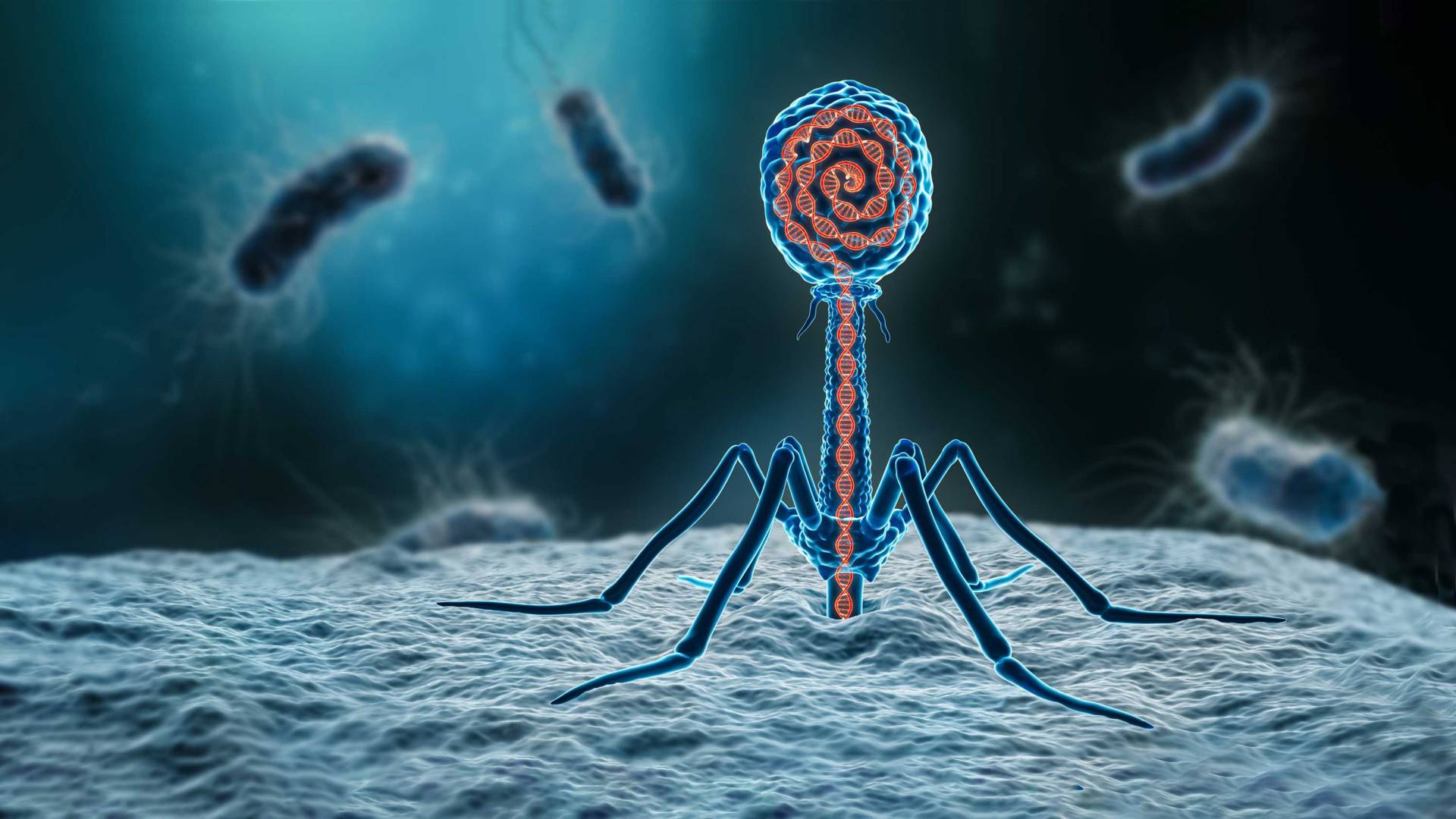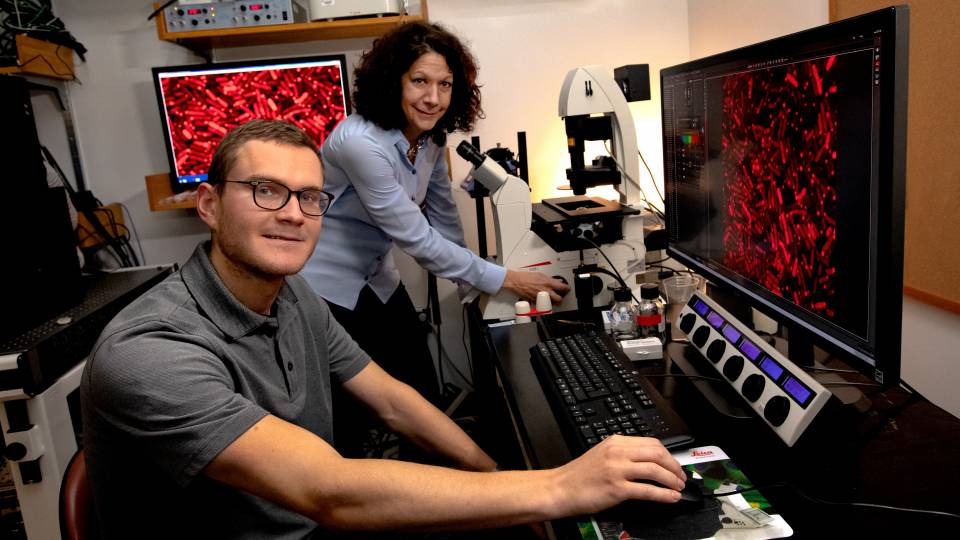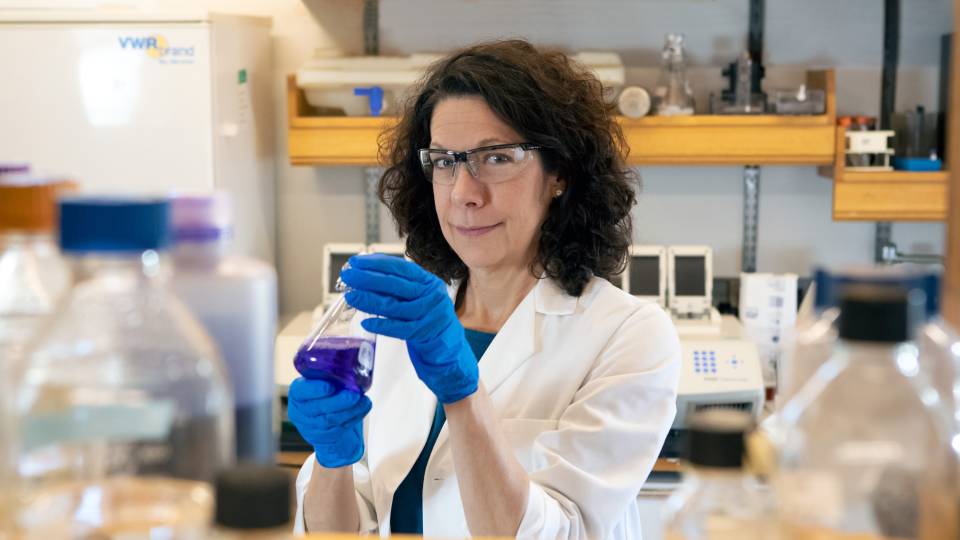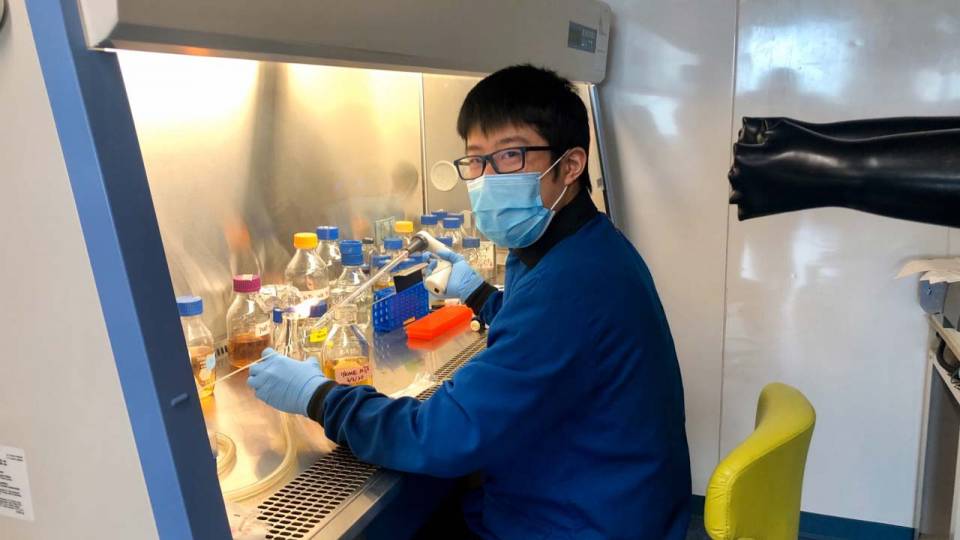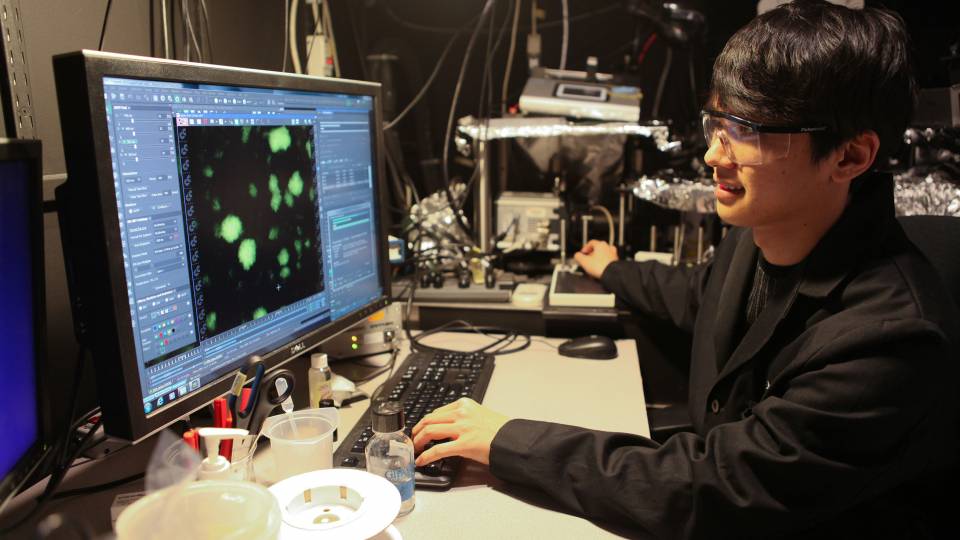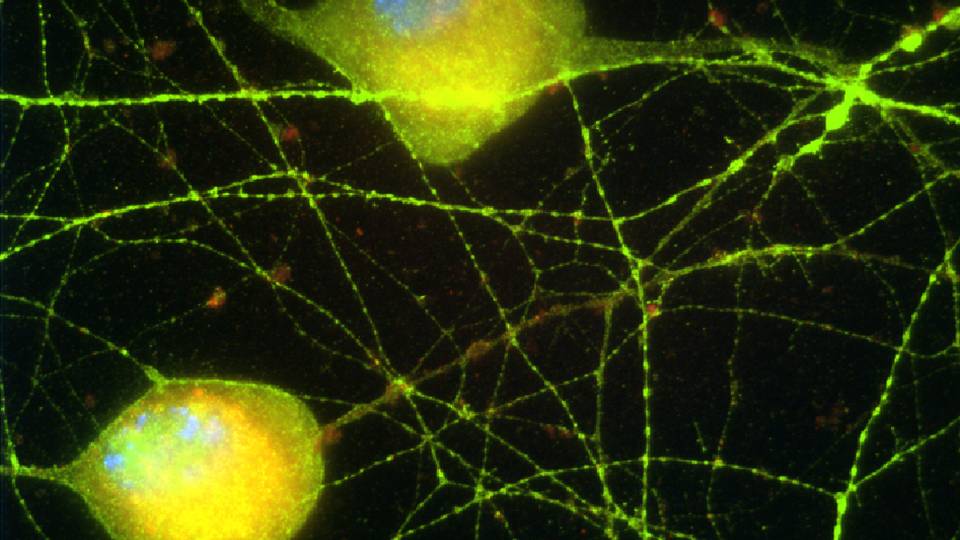A bacteriophage, a virus that only attacks bacteria, delivers its genes into a bacterial cell.
Viruses, like movie villains, operate in one of two ways: chill or kill.
They can lie low, quietly infiltrating the body’s defenses, or go on the attack, making many copies of themselves that explode out of hiding and fire in all directions. Viral attacks are almost always suicide missions, ripping apart the cell that the virus has been depending on. The attack can only succeed if enough other healthy cells are around for the the newly emerging viruses to infect. If the barrage of viral particles hits nothing, the virus cannot sustain itself. It doesn’t die, since viruses aren’t technically alive, but it ceases to function.
So for a virus, the key challenge is deciding when to flip from chill mode into kill mode.
Four years ago, Princeton biologist Bonnie Bassler and her then-graduate student Justin Silpe discovered that one virus has a key advantage: it can eavesdrop on the communication between bacteria. Specifically, it listens for the “We have a quorum!” chemical that bacterial cells release when they have reached a critical number for their own purposes. (The original discovery of this bacterial communication process, called quorum sensing, has led to a string of awards for Bassler and her colleagues.)
Now Bassler, Silpe and their research team have found that dozens of viruses respond to quorum-sensing or other chemical signals from bacteria. Their work appears in the current issue of Nature.
“The world is loaded with viruses that can surveil appropriate host information,” said Bassler, Princeton’s Squibb Professor in Molecular Biology and chair of the department of molecular biology. “We don’t know what all the stimuli are, but we showed in this paper that this is a common mechanism.”
Not only did they demonstrate the strategy’s abundance, but they also discovered tools that control it and send signals that tell the viruses to flip from chill into kill mode.
The kind of viruses that attack bacterial cells, known as bacteriophages — or phages for short — land on the surface of a bacterial cell and deliver their genes into the cell. Scientists call chill mode "lysogeny," so when more than one kind of chilling phage infects a bacterium at the same time, it’s known as "polylysogeny."
In polylysogeny, the phages can coexist, letting the cell copy itself over and over again as healthy cells do, the viral genomes tucked inside the bacterium’s own, replicating right along with the cells.
But the chill infiltrating phages aren’t exactly peaceful; it’s more like mutually assured destruction. And the tenuous detente lasts only until something triggers one or more of the phages to switch into kill mode.
Scientists studying phage warfare have long known that a major disruption to the system — like high-dose UV radiation, carcinogenic chemicals, or even some chemotherapy drugs — can kick all the resident phages into kill mode.
At that point, scientists thought, the phages start sprinting, racing each other to collect the bacterium’s resources, and whichever phage is the fastest will win and shoot out its own viral particles.
But that’s not what Bassler’s team found.
Grace Johnson, a postdoctoral research associate in Bassler’s research group, used high-resolution imaging to watch individual bacterial cells that were infected with two phages as she flooded them with one of these universal kill signals.
Both phages leapt into action, shredding the host cell. To see the outcome, Johnson “painted” each phage’s genes with special fluorescent tags that light up in different colors depending on which phage was replicating.
When they lit up, she was shocked to see that there wasn’t a clear winner. It wasn’t even a tie between the two. Instead, she saw that some bacteria glowed with one color, others with the second color, and still others were a blend — simultaneously producing both phages.
“No one ever imagined that there would be three subpopulations,” said Bassler.
“That was a really exciting day,” said Johnson. “I could see the different cells undertaking all the possible phage production combinations — inducing one of the phages, inducing another, inducing both. And some of the cells were not inducing either of the phages.”
Another challenge was to find a way to trigger only one of the two phages at a time.
Silpe, who had come back to Bassler’s lab as a postdoctoral research associate after performing postdoctoral studies at Harvard, had taken the lead on finding the triggers. While the team still doesn’t know what signals these phages respond to in nature, Silpe has designed a specific artificial chemical trigger for each phage. Grace Beggs, another postdoctoral fellow in the Bassler group, was instrumental in the molecular analyses of the artificial systems.
When Silpe exposed the polylysogenic cells to his cue, only the phage that responded to his artificial trigger replicated, and in all of the cells. The other phage remained wholly in chill mode.
“I didn’t think it would work,” he said. “I expected that because my strategy did not mimic the authentic process found in nature, both phages would replicate. It was a surprise that we saw only one phage. No one had ever done that before, that I’m aware of.”
“I don’t think anybody even thought to ask a question about how phage-phage warfare plays out in a single cell because they didn’t think they could, until Grace J. and Justin did their experiment,” Bassler said. “Bacteria are really tiny. It’s hard to image even individual bacteria, and it’s really, really hard to image phage genes inside individual bacteria. We’re talking smaller than small.”
Johnson had been adapting the imaging platform — fluorescence in situ hybridization, usually called FISH — for another quorum-sensing project involving biofilms, but when she heard Silpe share his research at a group meeting, she realized that FISH could reveal what until that point were intractable secrets about his eavesdropping phages.
The majority of the world’s bacteria have more than one phage chilling inside of them, “but nobody’s been able to manipulate and image them the way these two postdocs did,” Bassler said. “The cunning strategy where they could induce one phage, the other phage, or both phages on demand — that was Justin’s coup, and then to be able to actually see it happening in a single cell? That’s also never been done. That was Grace J. We can see the phage warfare at the level of the single cell.”
Nearly all genes on viral genomes remain mysterious, Bassler added. We simply don’t know what most viral genes do.
“Yes, here, we discovered the functions of a few phage genes, and we showed that their jobs are to enable this completely unexpected chill-kill switch and that the switch dictates which phage wins during phage-phage warfare. That discovery suggests there remain potentially even more exciting processes to find,” she said. “Phages started the molecular biology era 70 years ago, and they’re coming back into vogue both as therapies and also as this incredible repository of molecular tricks that have been deployed through evolutionary time. It’s a treasure trove, and it’s almost completely unexplored.”
“Small protein modules dictate prophage fates during polylysogeny,” by Justin E. Silpe, Olivia P. Duddy, Grace E. Johnson, Grace A. Beggs, Fatima A. Hussain, Kevin J. Forsberg and Bonnie L. Bassler, was published in Nature on July 26 (DOI:10.1038/s41586-023-06376-y). The research was supported by Princeton University, the Howard Hughes Medical Institute (HHMI), the National Institutes of Health (NIH), the National Science Foundation (NSF), the Jane Coffin Childs Memorial Fund for Medical Research (JCC Fund), the NIH Office of Extramural Research (OER) and the Damon Runyon Cancer Research Foundation.
